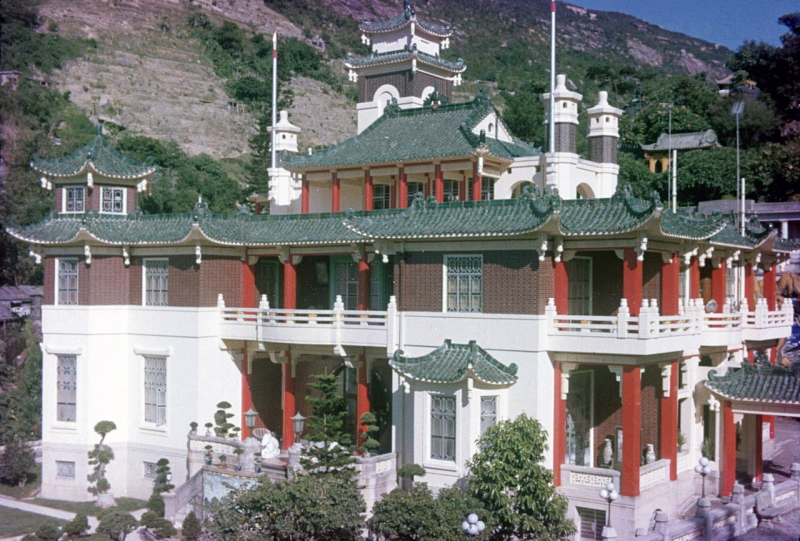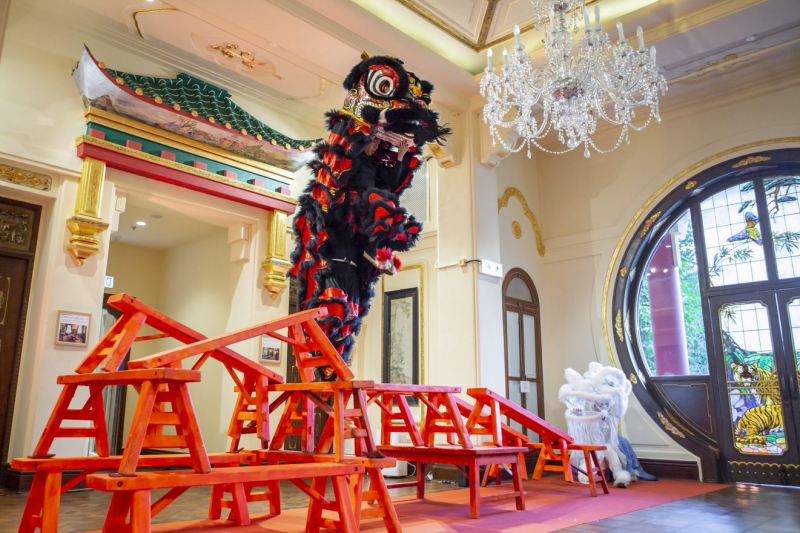Haw Par Mansion
This former residence belonged to “the King of Tiger Balm” Aw Boon Haw, a Burmese Chinese entrepreneur and philanthropist known for founding Tiger Balm, the brand of camphor and menthol ointment for relieving pain that grew to be a household medicinal staple. The family mansion was restricted to private use whereas the Tiger Balm Garden adjoining the mansion was used to be open for public enjoyment. The site was known for its eclectic mix of architectural styles and elaborate details. The Haw Par Mansion––which was built by Aw Boon Haw in the mid-1930s––was constructed in the Chinese Renaissance style with a blend of Western and Chinese construction methods. The porches, bay windows, and fireplaces are a western concept.
The mansion’s interior is decorated with painted glass windows from Italy, carvings, and moldings which are gilded with gold, and murals that show Indian and Burmese influence. The garden, famously known for its wall relief sculpture of the Ten Courts of Hell, was demolished, leaving behind a small mural. A new residential tower rose from the demolished garden. Today, the mansion is home to Haw Par Music, a center for music education, community, and heritage programs, such as the Guangdong folk art lion dance performance that blended with music and parkour, which was presented by the Jockey Club New Arts Power in 2019.












